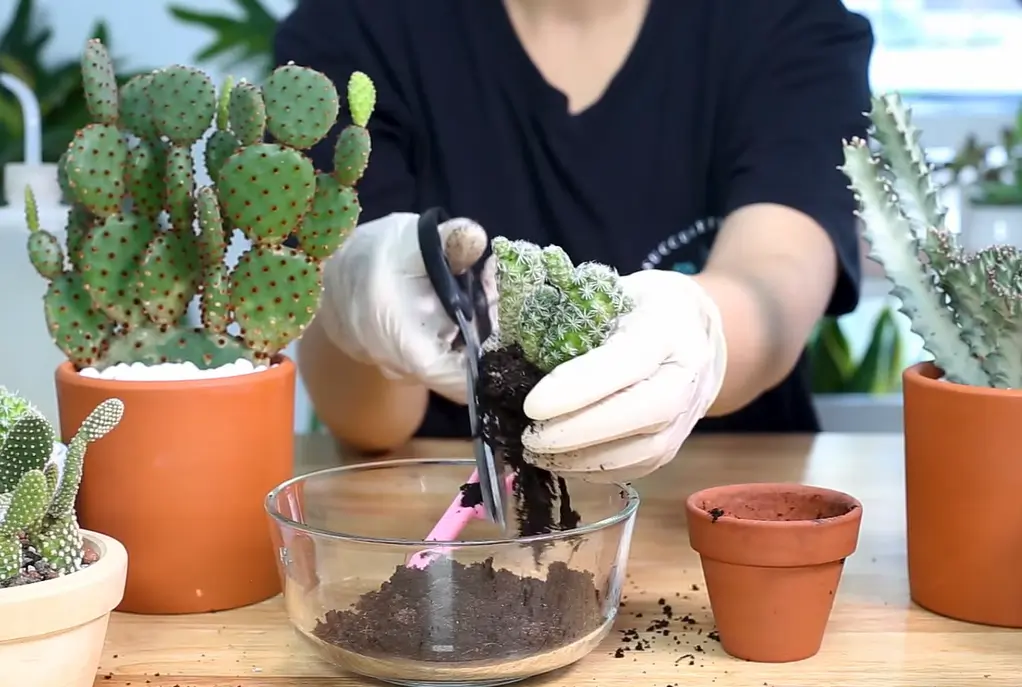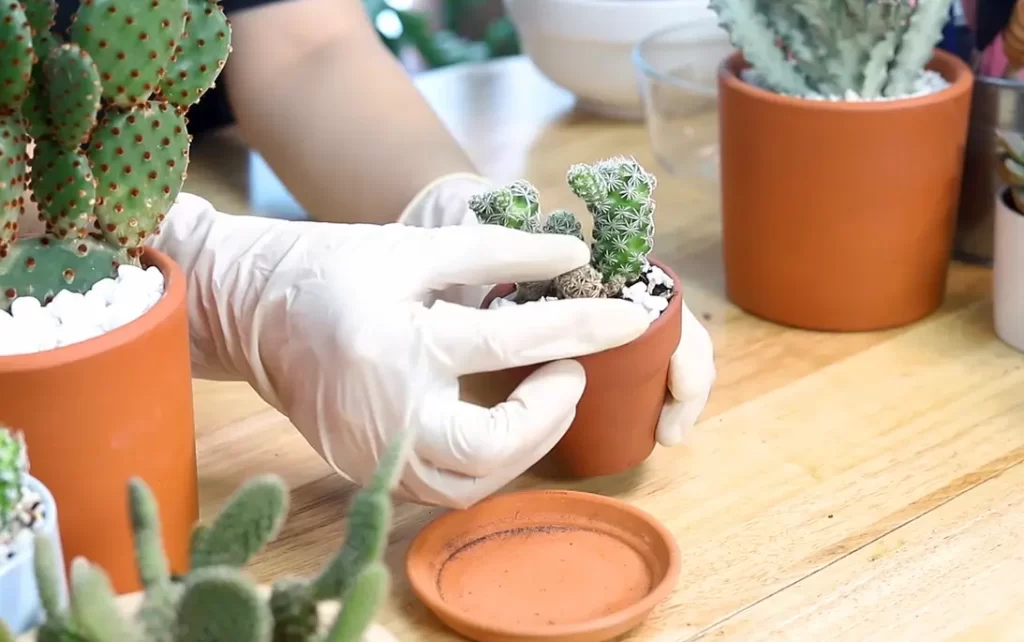Why Is My Cactus Turning Light Green? 3 Remedies & Tips
Cacti are known for their tough exterior and ability to withstand harsh conditions, making them a popular choice for low-maintenance houseplants. However, even the most resilient plants can experience changes in appearance that leave their owners scratching their heads.
One common issue that cactus owners may encounter is their plant turning light green. If you have ever fallen into such situations, a question may perplex you: Why is my cactus turning light green?
Your cactus may be turning light green because it is not getting enough light. Cacti need lots of direct sunlight to stay healthy, so you may need to move to a brighter location.
In this blog, we will explore why your cactus may be turning light green and what steps you can take to remedy the issue.
Normal Cactus Coloration
Normal cactus coloration can vary greatly depending on the species and environmental conditions. Most cacti have green stems, allowing them to use photosynthesis and produce food.

However, some species may have other colors, such as blue or gray, due to a waxy coating on their skin that reduces water loss in arid environments.
Some cacti also have colorful flowers ranging from white and yellow to pink and red, attracting pollinators such as bees and birds. Overall, cactus coloration is a fascinating aspect of these unique plants.
Why Is My Cactus Turning Light Green?
One common issue that cactus owners may encounter is the change in their cactus’ color, specifically turning light green. Here, we will explore the possible causes of cacti turning light green.
Sunlight
Cacti thrive in direct sunlight, but too much exposure to harsh sunlight can cause discoloration. Direct sunlight can cause sunburn on the cactus’ skin, which may result in a light green color.
On the other hand, insufficient sunlight can cause the cactus to turn light green due to its lack of natural light to photosynthesize.
Watering
Overwatering or underwatering can both cause cacti to turn light green. Cacti are adapted to survive in dry environments, so overwatering can lead to root rot, which affects the plant’s ability to absorb nutrients properly.
In contrast, underwatering can cause the cactus to turn light green as it tries to conserve water, leading to stunted growth and discoloration.
Fertilizer
Using the wrong type of fertilizer or applying too much can cause cacti to turn light green. Cacti need specific nutrients, such as magnesium, to maintain their green color.
A lack of magnesium can cause the cactus to turn yellow or light green. On the other hand, excess fertilizer can lead to an imbalance of nutrients, resulting in discoloration.
Time
Cacti change colors naturally as they age. Young cacti may have a bright, vibrant green color but may turn light green as they mature.
This color change is a natural part of the plant’s growth process and does not necessarily indicate any issues with the plant’s health.
Condition
Cacti require specific conditions to thrive. They are adapted to living in drought-like conditions, and any changes in the climate or environment can affect their color.
For example, if the cactus is in a spot with too much heat, it can cause the plant to turn light green. Similarly, if the cactus is in a location with too little light or shade, it can lead to discoloration.
What Light Green Coloration in a Cactus Indicate
Light green coloration in a cactus plant could indicate a few different conditions. One possibility is that the cactus is not receiving enough direct sunlight, which can cause the stem to become lighter in color.
Another possibility is that the cactus receives too much water or fertilizer, leading to over-hydration or nutrient burn. Magnesium deficiency can also cause light green coloration in cacti. Additionally, if the cactus is experiencing root rot, the stems may begin to turn light green.
So, consider the location, time of year, and environmental conditions when caring for a cactus plant. Providing the proper balance of sunlight, water, and fertilizer can help maintain the health and color of the cactus. However, if you have cactus dead, you can use the cactus soil for planting peace lilies.
How to Remedy a Cactus Turning Light Green
If you notice that your cactus is turning light green, it may be a sign that something is wrong. Here, we’ll explore some possible causes of this problem and suggest ways to remedy this problem.
Remedy 1: Adjust Sunlight Exposure
If your cactus is not getting enough sunlight, you can try moving it to a sunnier location. Ideally, your cactus should receive at least six hours of direct sunlight daily.
However, if this is impossible, you may need to supplement it with artificial light. Place the cactus under a grow light for several hours each day to ensure it gets the light it needs to stay healthy.
Remedy 2: Adjust Watering Schedule
If you suspect your cactus is over-watered, you may need to adjust your watering schedule. Cacti typically require a thorough watering every two to three weeks, depending on the species and environmental conditions.
Water your cactus deeply, allowing the soil to dry out completely before watering again. Use a well-draining soil mix and a pot with drainage holes to prevent water from pooling around the roots.
Remedy 3: Address Nutrient Deficiencies or Pests
If your cactus is turning light green due to nutrient deficiencies or pests, you may need to take more specific action. A soil test can help determine if your cactus lacks essential nutrients.
However, if so, add a balanced fertilizer specifically formulated for cacti and succulents. Alternatively, if your cactus is infested with pests such as mealybugs or spider mites, you may need to treat it with insecticidal soap or neem oil.
What Are The Signs Of A Dying Cactus?
Cacti are low-maintenance plants, but they still require proper care to thrive. A dying cactus can be identified by several signs that indicate it is struggling and needs immediate attention.
- Condition: A cactus will show signs of distress in drought-like conditions, such as shriveling and drying out. Extreme temperatures, high humidity, and sudden temperature changes can also stress the cactus.
- Color: A healthy cactus is usually a deep green color, and a light green color could indicate that the plant is not getting enough water or is suffering from nutrient deficiency. Yellow or black discoloration is a sign of disease or decay.
- Sunlight: Cacti require adequate sunlight to thrive, and a lack of sunlight can lead to stunted growth or discoloration. On the other hand, harsh or intense sunlight can cause sunburn or damage to the cactus.
- Water: Overwatering or underwatering a cactus can lead to root rot or dehydration, respectively. Proper watering involves allowing the soil to dry out between waterings.
- Stems: A healthy cactus should have firm, plump stems. Soft or mushy stems indicate that the plant is rotting or decaying.
- Roots: Root rot can occur if the cactus is overwatered or planted in soil that does not drain well. A foul odor and black, mushy roots can identify this.
How Long Can Cactus Go Without Water?
Cacti are adapted to survive in hot and dry conditions, which means they can go for extended periods without water. The duration a cactus can go without water depends on factors such as species, location, and environmental conditions.

Generally, a healthy cactus plant can go for several weeks without water. Some species, like the Saguaro cactus, can survive up to two years without water. However, prolonged drought conditions can weaken and damage the cactus plant, making it more susceptible to diseases like root rot.
It’s important to water cacti sparingly and only when the soil is completely dry. Cacti should also be placed in locations with adequate sunlight, and care should be taken not to expose them to direct sunlight or extreme temperatures.
Verdicts
“Why is my cactus turning light green?” – the answer to this question is quite simple due to inadequate light exposure. For a cactus to maintain its deep green color, it must be exposed to at least four hours of direct sunlight daily.
If your cactus is not receiving enough sunlight, it will start to turn a lighter shade of green. Additionally, improper watering, too much fertilizer, and certain environmental conditions can cause light green discoloration in cacti.
